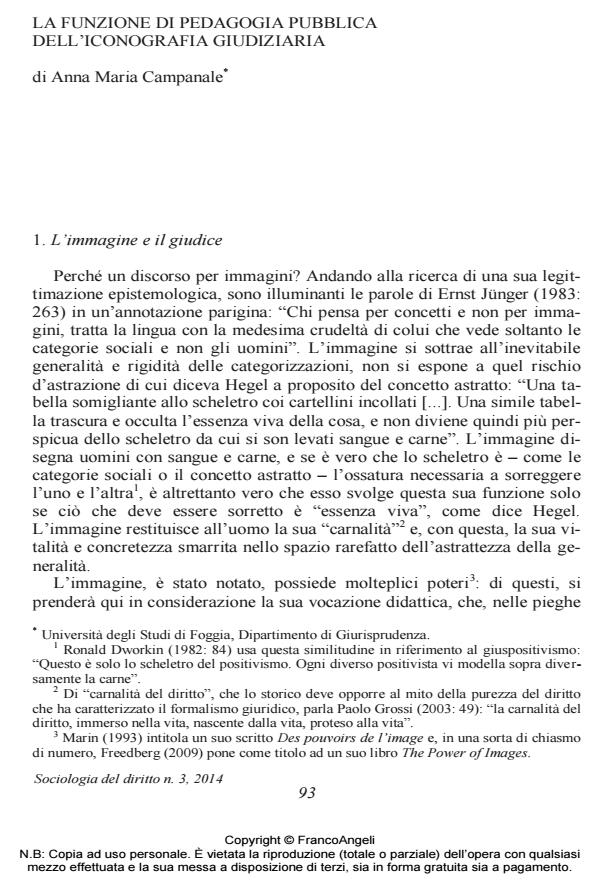The public educational function of judicial iconography
Journal title SOCIOLOGIA DEL DIRITTO
Author/s Anna Maria Campanale
Publishing Year 2015 Issue 2014/3
Language Italian Pages 19 P. 93-111 File size 170 KB
DOI 10.3280/SD2014-003005
DOI is like a bar code for intellectual property: to have more infomation
click here
Below, you can see the article first page
If you want to buy this article in PDF format, you can do it, following the instructions to buy download credits

FrancoAngeli is member of Publishers International Linking Association, Inc (PILA), a not-for-profit association which run the CrossRef service enabling links to and from online scholarly content.
The educational potential of images is certainly the most significant of their various capabilities. Legal experience in all its forms also envisages the use of images on the part of powers for the purpose of leading, orienting and educating those whom they target. The author analyses the educational function of images of justice depicted in sixteenth-century public buildings in many European territories, where judges were gaining increasing autonomy from their respective sovereigns, thus triggering a process of their socio-professional definition. This process led to the formation of a judicial power separate from the political power. Even though these images’ educational function became a thing of the past with the rise of the rule of law, the question is raised of whether they still retain any eloquence on the scene of justice today. Today’s transformation of justice into a public spectacle may offer food for thought in this respect.
Keywords: Images, Justice, Courtrooms, Public education
Anna Maria Campanale, La funzione di pedagogia pubblica dell’iconografia giudiziaria in "SOCIOLOGIA DEL DIRITTO " 3/2014, pp 93-111, DOI: 10.3280/SD2014-003005